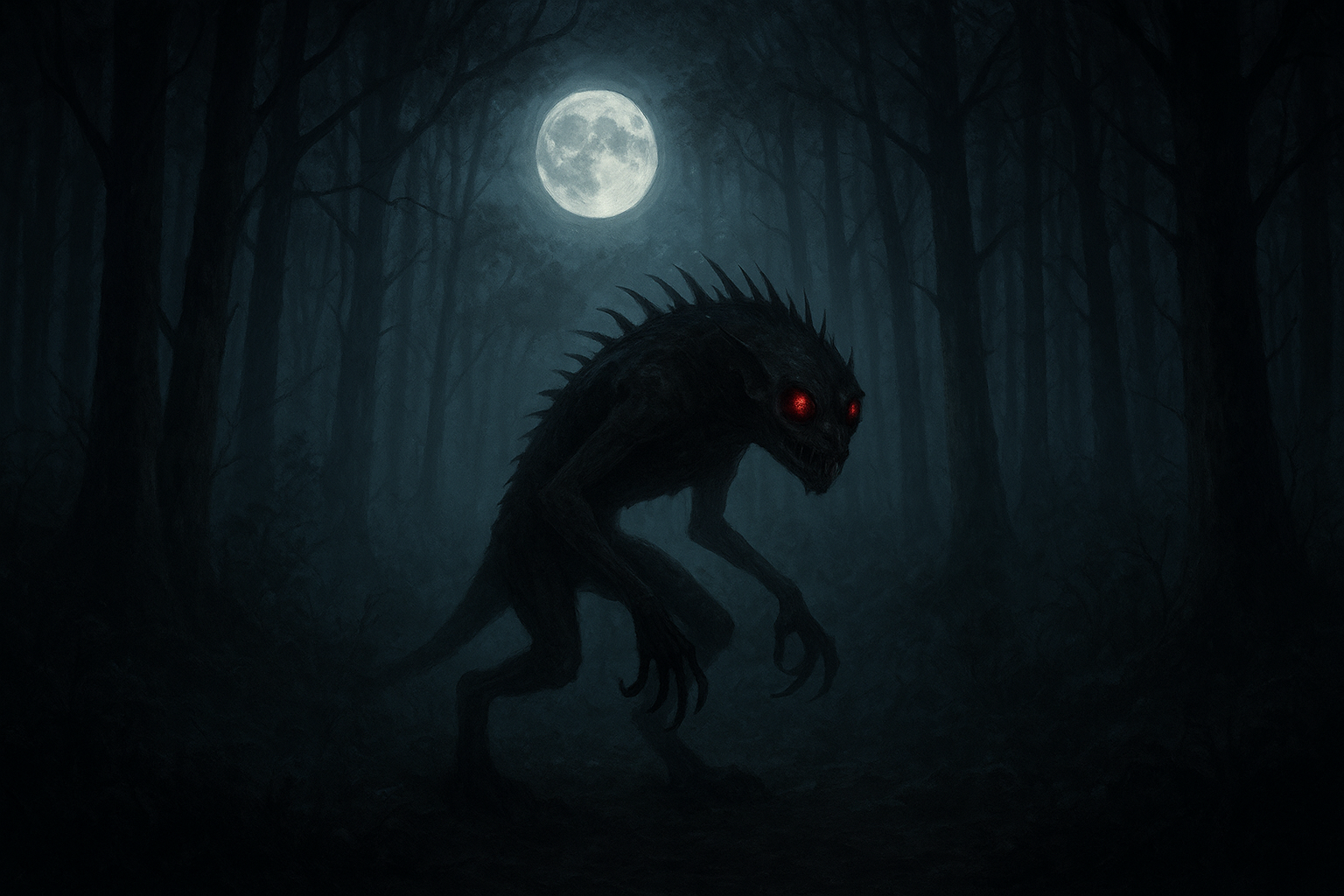Chupacabra
Overview

Description
The Chupacabra: Unraveling the Legend of Latin America’s Most Elusive Cryptid
Few modern legends have spread as widely—or inspired as much curiosity—as the Chupacabra, the mysterious creature said to drain livestock of blood and stalk the rural landscapes of the Americas. Unlike many cryptids whose origins stretch back centuries, the Chupacabra is a relatively recent arrival, exploding into public awareness in the mid-1990s. Yet in just a few decades, it has become one of the most iconic figures in contemporary folklore.
Today, the legend lives at the crossroads of cultural storytelling, unexplained phenomena, and the enduring human fascination with what lurks in the dark.
Origins: Puerto Rico, 1995
The Chupacabra legend began in Puerto Rico, where farmers reported losing goats, chickens, and other livestock under strange and alarming circumstances. The dead animals were often found with:
- Two small puncture wounds on the neck
- Little or no blood remaining
- No signs of a struggle or scavenging
These details set the Chupacabra apart from known predators, sparking panic among rural communities and intense media coverage.
The first detailed eyewitness account described a creature about three to four feet tall with:
- Gray or greenish skin
- Large, oval, red or black eyes
- Spines or quills running down its back
- An upright, bipedal stance
That initial sighting shaped what many now call the **“classic” Chupacabra.”
The Legend Spreads
Once the story reached international news outlets, reports of similar livestock attacks began surfacing across:
- Puerto Rico
- Dominican Republic
- Mexico
- Chile
- Brazil
- Southern United States (especially Texas)
The Chupacabra became a cultural phenomenon—part monster, part mystery, part cautionary tale.
No matter the location, the pattern remained eerily consistent:
dead animals, drained blood, and witnesses describing something they couldn’t quite identify.
Two Chupacabras: A Split in the Myth
Over time, the legend evolved into two distinct versions:
1. The Classic Chupacabra (Puerto Rican Version)
This is the original, reptilian-like creature:
- Walks on two legs
- Has sharp claws
- Skin reminiscent of a lizard or alien
- Spines down the back
- Often portrayed as supernatural or extraterrestrial
This version thrives in pop culture, portrayed in movies, comics, and video games.
2. The Canine Chupacabra (Texas/Mexico Version)
Beginning in the early 2000s, new sightings described a creature that looked radically different:
- Hairless, dog-like body
- Mottled, gray-blue skin
- Long muzzle with prominent fangs
- Usually four-legged
- Moves awkwardly, often sick or weak
Biologists commonly attribute these sightings to coyotes or dogs with mange, which dramatically alters their appearance. Still, many locals insist the creature moves unlike any coyote they’ve seen.
Why the Legend Endures
The Chupacabra persists for several reasons:
1. Unexplained Animal Deaths
Rural communities around the world experience mysterious livestock fatalities. When the cause isn’t clear, legends fill the gaps.
2. Media Influence
The rise of the Chupacabra coincided with a surge in paranormal television, internet forums, and tabloid reporting.
3. A Creature for the Modern Age
Unlike ancient myths, the Chupacabra grew up in the era of:
- Photos (often blurry)
- Viral stories
- Global news cycles
It’s a monster with a modern marketing pipeline.
4. Cultural Resonance
In many Latin American communities, the Chupacabra symbolizes:
- Anxiety in rural life
- Fear of the unknown
- Distrust of official explanations
- The blending of indigenous, Spanish, and modern folklore traditions
It stands as a cultural mirror as much as a cryptid mystery.
Scientific Theories
Though no physical Chupacabra has ever been captured or verified, several explanations exist:
1. Misidentified Animals
Most “canine-type” sightings are attributed to:
- Coyotes
- Dogs
- Foxes
- Hybrids
…affected by sarcoptic mange, which causes:
- Severe hair loss
- Thick, scaly skin
- Weakness
- Strange movement patterns
2. Vampire Bat Misconceptions
In rare cases, livestock wounds may resemble vampire bat bites—though bats don’t typically kill animals.
3. Social Panic
Like many phenomena, fear and rumor can amplify isolated events into larger legends.
4. Unknown Species (Cryptozoological Theory)
Some enthusiasts believe the “classic” Chupacabra could be:
- A yet-undiscovered predator
- A mutated species
- An escaped exotic animal
- Even an extraterrestrial being
No solid evidence supports these theories, but they keep the story alive.
Chupacabra in Pop Culture
Today, the Chupacabra appears everywhere—from animated shows to horror films, comic books, collectibles, and video games. It stands alongside Bigfoot and the Loch Ness Monster as one of the world’s most recognizable cryptids.
The creature’s adaptability—sometimes alien, sometimes canine—makes it a flexible and enduring icon of the unknown.
Conclusion: A Creature of Mystery and Imagination
The Chupacabra may never be proven real, but its impact is undeniable. It represents the tension between modern science and ancient fear, between recorded fact and whispered folklore.
Whether seen as a literal monster, a misunderstood animal, or a cultural symbol, the Chupacabra remains one of the most compelling legends of our time.
Because deep down, we all wonder:
Behavior
Nocturnal predator. Attacks livestock, particularly goats and chickens, draining their blood. Moves quickly and silently.
Reported Sightings (0)
No reported sightings yet.
Geographic Distribution
Puerto Rico, Latin America
Puerto Rico, Mexico, United States (Southwest), Central and South America
Rural areas, farms, scrubland
Characteristics
3-4 feet tall
Blood (especially from goats, chickens)
Historical Context
March 1995 (Puerto Rico)
First reported in Puerto Rico in 1995. Name means 'goat sucker' in Spanish. Possibly influenced by the film 'Species' (1995).
Numerous livestock killings in Puerto Rico (1995), Texas sightings (2000s), alleged carcasses examined